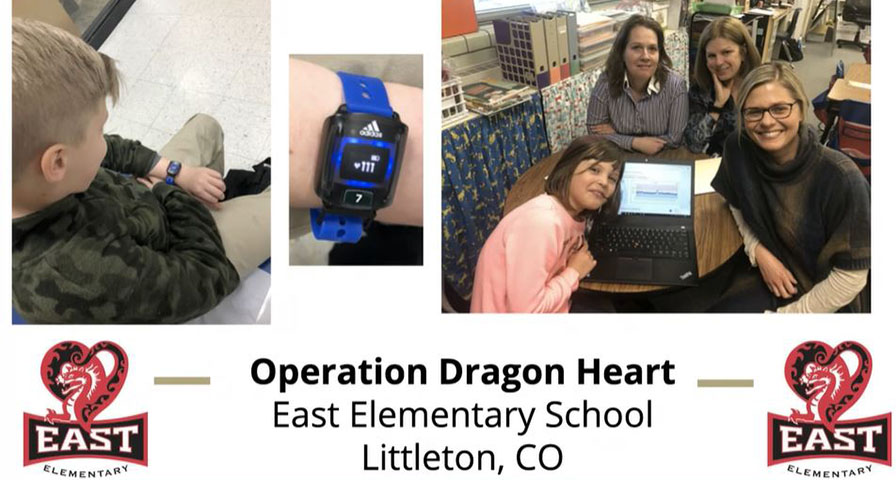After a successful debut at East Elementary School, a program that uses heart rate monitors to help students manage their emotions will be launched throughout Littleton Public Schools in the 2020-21 school year.
On an Interactive Health Technologies webinar explaining his district’s program, Littleton Public Schools Director of Social, Emotional and Behavioral Services Nate Thompson explained that, thanks to a grant from the Littleton Public Schools Foundation, the district’s other 12 elementary schools will implement the program which began as Operation Dragon Heart next year.
“We’re going to do this with fidelity and do it well at all of our elementary schools,” Thompson said. “Heart rate is one of the simplest and easiest ways to see how people are doing on the inside.”
Finding Technology to Connect Heart Rate, Students’ Emotions
“How do we help kids see that they have some power and the ability to regulate themselves?” Thompson said. “How do we do that in a way that’s visual? We looked at heart rate as a way to do that.”
“We wanted to start small and do something we felt would be successful at one school,” Thompson said. “That’s what it comes down to for us. We wanted to figure out how to get our schools get this on an individual student level and look at [emotional] self-regulation in a different way.”
Littleton chose the IHT ZONE heart rate monitor as the tool to connect students with their heart rate and emotional state.
“The IHT product was one we felt that, after looking at 10 or 12 products, was the best one for kids,” Thompson explained. “It was built for students. It was visual and it had the different colors. That got us going.”
Six-Week Program Helps Gives Students Power to Manage Emotions
With the technology and corresponding Social-Emotional Learning curriculum, East Elementary launched the six-week program that showed students and parents how to identify changes in heart rate that usually indicate a change in emotion that triggered various types of behavioral episodes.
 Counselors showed students how to correlate the colors they see on the heart rate monitor with how they might be feeling emotionally: blue indicates calm, content, or happy; yellow indicates excited, frustrated, nervous or worried; and red indicates elated, upset, terrified or angry.
Counselors showed students how to correlate the colors they see on the heart rate monitor with how they might be feeling emotionally: blue indicates calm, content, or happy; yellow indicates excited, frustrated, nervous or worried; and red indicates elated, upset, terrified or angry.
Students in the program:
- Wore heart rate monitors every day;
- Had regular meetings with counselors and parents to review the heart rate data; and
- Began to understand the parts of the day that cause anxiety.
The real-time feedback gives students their first glance at controlling their emotions. If they are upset or agitated, they incorporate the techniques learned through the SEL curriculum (In Focus) and try to get their monitor to change back to blue if it has become yellow or red.
“We learned that parents, staff and students all believe that the program helps the students self-regulate on a deeper level and see a physical connection with the biological feedback,” Thompson said.
Thompson said results proved the program’s success, especially when paired with efforts to work with students throughout the campus who weren’t involved in Operation Dragon Heart. Behavior-based incidents dropped significantly, from 17 in the 2018-19 school year to just three this year. Incidents that resulted in students being suspended from campus also dropped from eight to three.
“What we’ve seen has been significant,” Thompson said. “The progress these students made was life-changing for them. The students who were able to do this and make their monitors change color feel so proud of their ability to do that. This has real meaning for the kids and families who are using it, and for the staff as well.”


